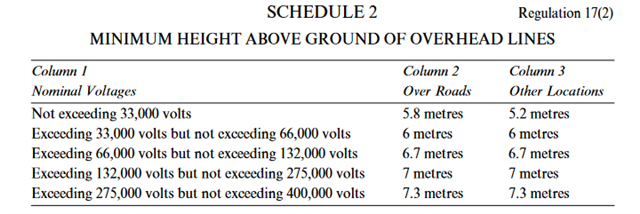The news report is behind a pay wall, but you'll get the gist of it, farm equipment is a lot bigger than it used to be particularly booms on sprayers and the like.
So maybe it's time to increase the clearance of overhead electricity cables.
www.fwi.co.uk/.../overhead-power-line-height-rules-need-safety-update-say-farmers
